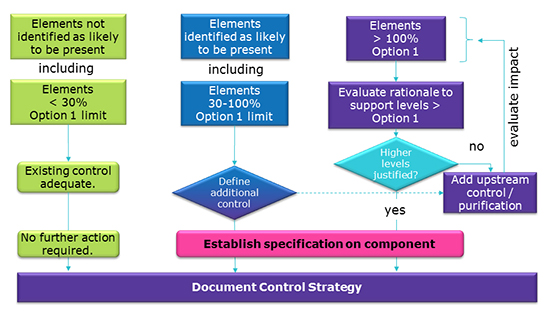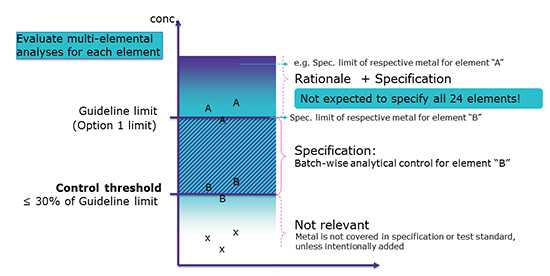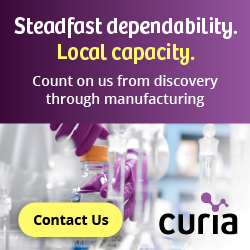Elemental Impurities: Implications for Manufacturers of Drug Products, APIs & Excipients

By: Ulrich Reichert, PhD, Head of Pharma & Food Materials, Regulatory Management, Merck KGaA, Darmstadt, Germany
Introduction
The International Conference on Harmonization (ICH) finalized the ICH Q3D Guideline for elemental impurities in December 2014.1 Regulators are now implementing the requirements worldwide, with some start dates already in place as of June 2016. ICH Q3D is the most comprehensive guideline for limits and risk assessment approaches for elemental impurities in final drug products to date; however, it does not specify limit for the major components of drug products. This brings excipients in particular under scrutiny, being they, unlike APIs, lack established daily doses.2 Given this, how can drug product manufacturers assess risk of elemental impurity to comply with ICH Q3D?
Classes of Elements
ICH Q3D classifies 24 elements based on toxicity and likelihood of occurrence in final drug products. Figure 1 summarizes the elements included in each class, noting when risk assessment is required.

Figure 1. Elements to be considered in risk assessments1
Risk Assessments
Risk assessments should consider all potential sources of elemental impurities, including water, starting materials, manufacturing equipment, process materials, and packaging materials (Figure 2).

Figure 2. Drug manufacturer’s perspective of possible sources of elemental impurities
Drug Product Assessment & Component Assessment Approach
ICH Q3D recommends two established approaches for impurity assessment:
The drug product assessment approach is to analyze the final product and provide a mandatory risk management strategy. Data alone is not considered sufficient.
The component assessment approach assesses individual components, then compares the combined elemental level with the PDE. A control strategy is established if necessary. This approach benefits from supplier information regarding specific components. Figure 3 compares the approaches.

Figure 3. Product and component assessment approach3
Control Strategy
ICH Q3D provides PDE limits in µg/day for elemental impurities. However, concentration limits in µg/g are more useful for evaluating sample impurity content.
Chapter 7 of ICH Q3D offers Options for translating:
-Option 1 assumes daily intake of the drug product is 10 g or less
-Option 2A uses an actual maximum daily intake (versus assuming 10 g)
-Option 2B sums known component impurity levels
-Option 3 measures the concentration of elements in the final drug product
Drug Products
Of the 24 elements considered, a number will not likely be present and need only be documented as such. Other elements, such as those in Class 1 and Class 2A, must be in all risk assessments.
The control threshold helps determine which elements are at risk of exceeding the PDE. For elements consistently below the control threshold – 30% of the PDE – existing controls are considered adequate. Elements that surpass the control threshold need to be controlled, whether by upstream controls or by source purification. A rationale for higher levels of exposure (eg, short-term usage, a life-threatening disease) may justify surpassing the threshold.
Excipients
Because excipients do not have a daily dose, there is no established concentration limit in line with ICH Q3D to which excipient manufacturers can refer. Acceptable limits for these components are therefore left to drug product manufacturers and their suppliers. To support negotiations, Option 1 (10 g daily dosage) is a useful default concentration limit. Figure 4 illustrates this approach.

Figure 4. Control strategy for components, based on the Option 1 limit as the default4
Elements Intentionally Added
Intentionally added metals or elements should be considered in every risk assessment. This requires information about which elements have been added, relevant production steps, and the purge potential of subsequent steps.
Elements Not Intentionally Added
Figure 5 illustrates an approach to evaluating the results of a multi-element analysis of a pharmaceutical substance. The y-axis depicts the concentration of the individual elements, the guideline limit, and the respective control threshold. The guideline limit is dependent on route of synthesis and the maximum daily dose of the drug product.

Figure 5. Control strategy for elements not intentionally added4
If metal X is consistently below the control threshold, the metal can be excluded from the specification, unless other risk factors require its control. If metal B is higher than the control threshold, but below the guideline limit, the element should be subject to analytical control and covered in the specification. A pharmaceutical substance with element results higher than the Option 1 limit may be used in final drug products, but a rationale is appropriate.
Conclusion
The component assessment approach allows drug product manufacturers to assess elemental impurity risk in compliance with ICH Q3D. For standardizing impurity limits across components, manufacturers and excipient suppliers may find the Option 1 limit useful as the default concentration limit. This approach permits manufacturers and suppliers to obtain crucial impurity information for components with indeterminate impurity limits, particularly excipients.
References
1. ICH. 2014. ICH Harmonized Guideline Q3D, Guideline for Elemental Impurities, Step 4.
2. Teasdale A, et al. Implementation of ICH Q3D elemental impurities guideline: challenges and opportunities. Pharm Tech. 2015;39(3):36-49.
3. ICH. 2016. ICH Q3D Training Package Module 5.
4. Reichert U. Elemental impurities: ICH Q3D finalized. Pharm Ind. 2016;78(5):670-676.
Total Page Views: 3318














